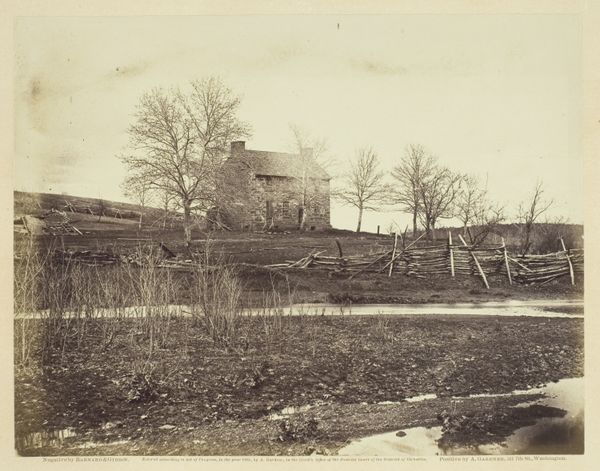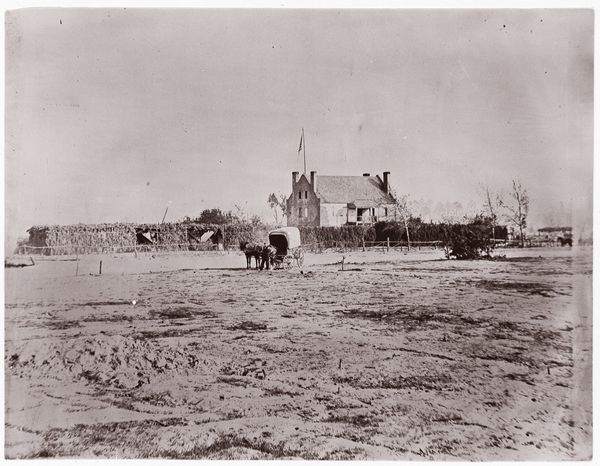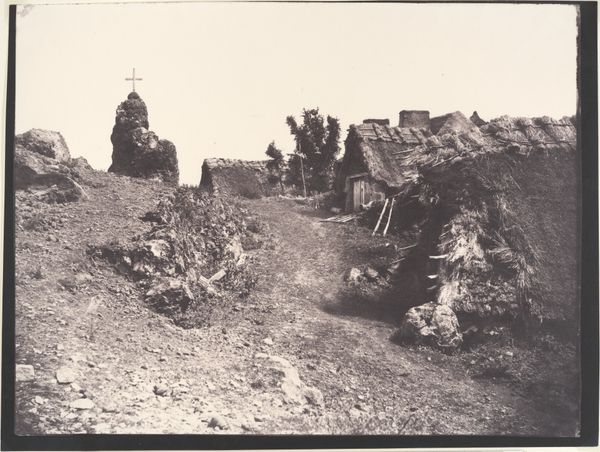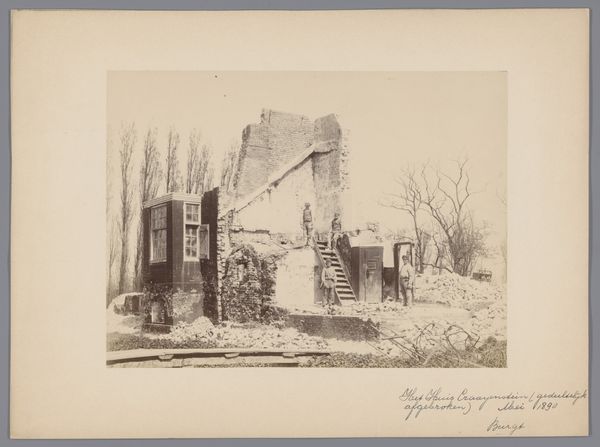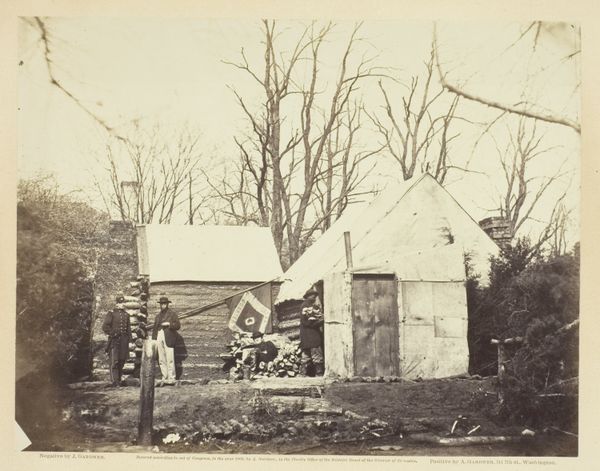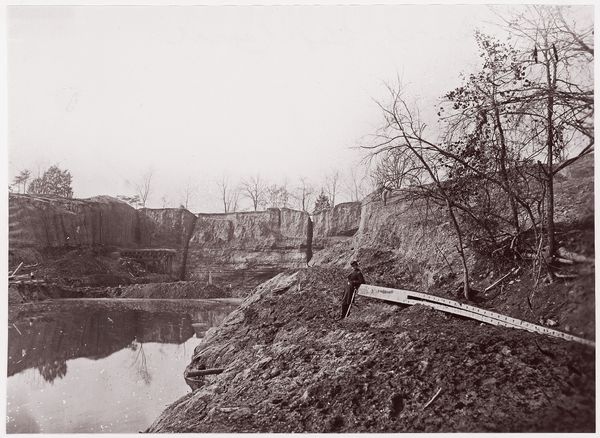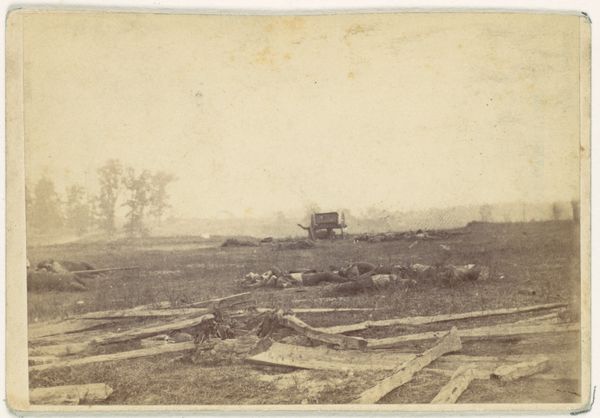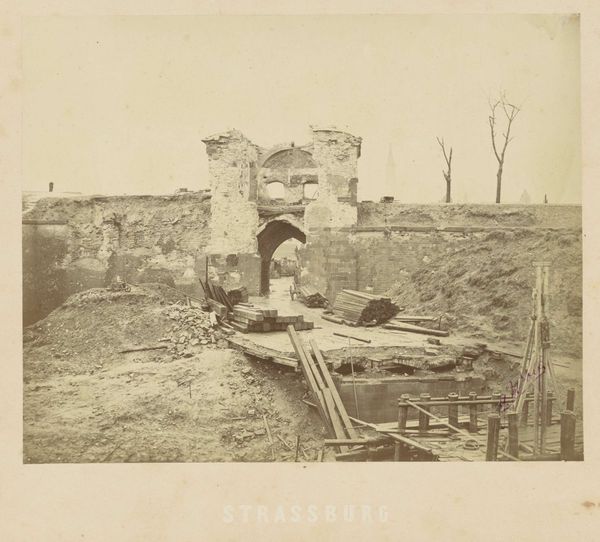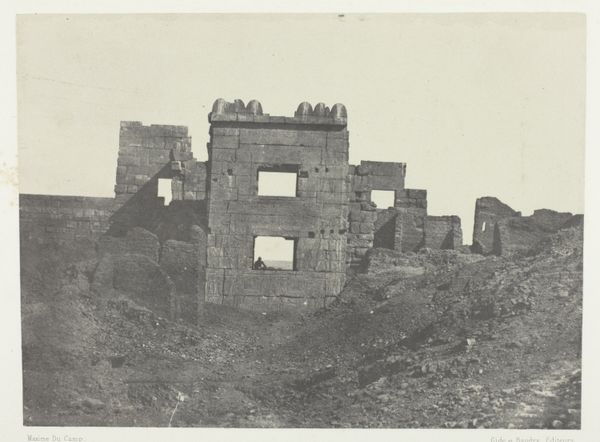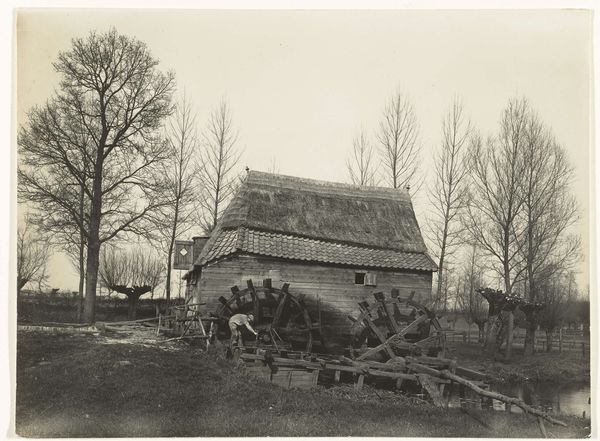
Dimensions: image/sheet: 17.9 × 22 cm (7 1/16 × 8 11/16 in.) mount: 31.6 × 33.9 cm (12 7/16 × 13 3/8 in.)
Copyright: National Gallery of Art: CC0 1.0
Curator: This is Édouard Loydreau’s “Effet de Givre,” or "The Effect of Frost," taken in 1853, using the albumen print process. It’s a fascinating example of early landscape photography. Editor: It’s haunting. The tones are so soft, almost velvety. And the composition, with the strange pyramidal structure, gives it this otherworldly quality, like a forgotten place. Curator: The albumen print would have been created from a glass negative, painstakingly coated with albumen – that’s egg white – and silver salts. That process yields those rich, detailed tones we’re admiring. Think about the labour involved in producing a single print like this, it really underscores photography’s value in that era. Editor: And the subject matter itself…the inclusion of industrial or agricultural architecture next to humble rural building is striking for the period. These structures, frozen over, appear as a monument to a changing French landscape during the nineteenth century. Consider how such an image might have been received then, amid rapid industrialization and social upheaval. Curator: Exactly. This image highlights photography's shift to challenge conventional art, capturing textures and a tactile reality unavailable with contemporary painting techniques, a fact enhanced by the visible wear and tear of its materiality as object over a century and a half. Editor: Do you find that the social impact of these technological advancements, and the changing landscape they enable, would alter and make newly political something simple, such as a field? Curator: I think so. Realism in photography, like realism in painting, made everyday scenes… socially salient, making them subjects for the national conscious and potential material advancement. It forces a discourse over whose lives have importance or not. Editor: Food for thought... Curator: Indeed. Looking at “Effet de Givre”, what begins as a still photograph can develop to represent rapid shifts in material condition. Editor: Very powerful! It is strange to imagine our world as perceived over the intervening years for this once still life.
Comments
No comments
Be the first to comment and join the conversation on the ultimate creative platform.
